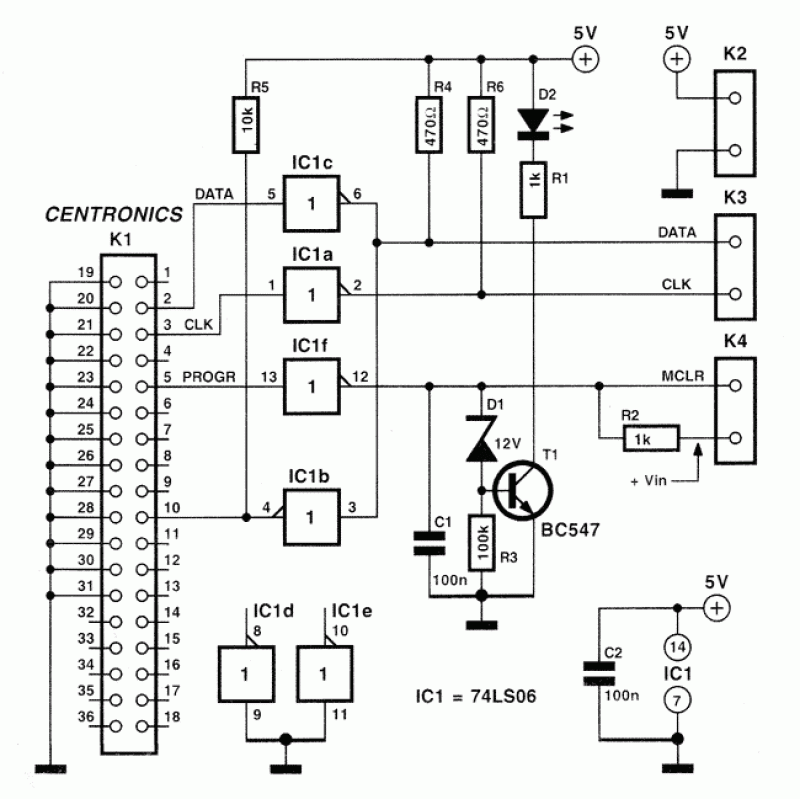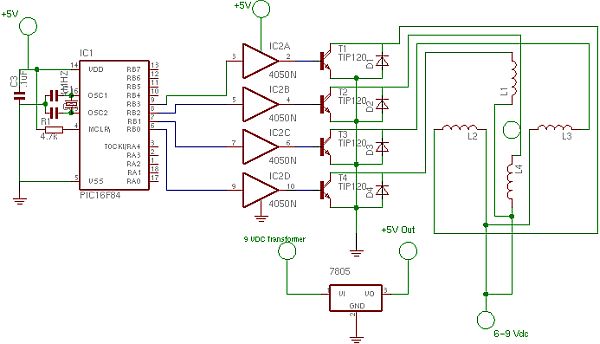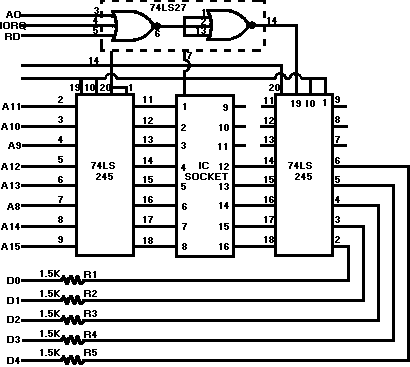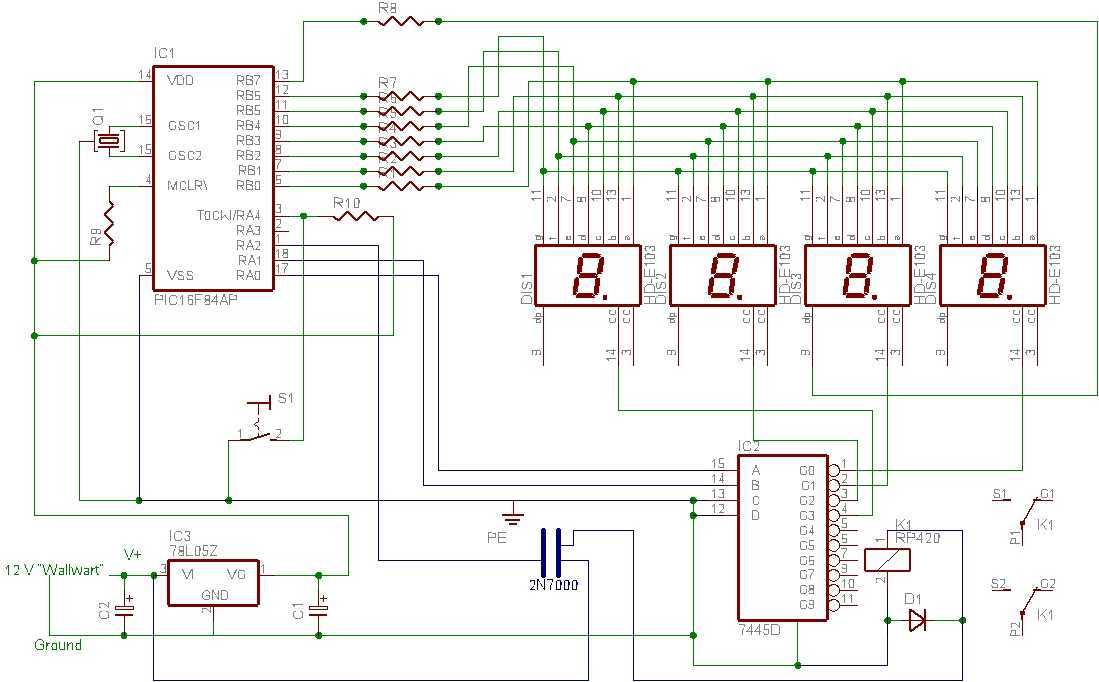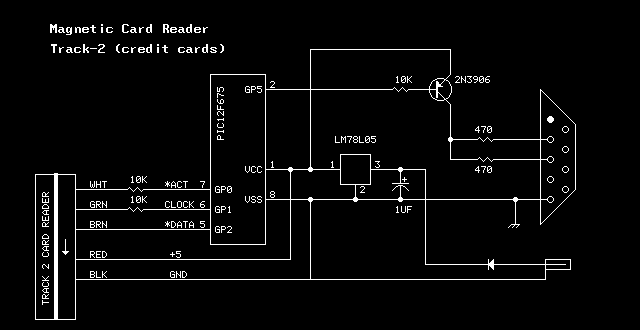
40 pin pic development board with usb
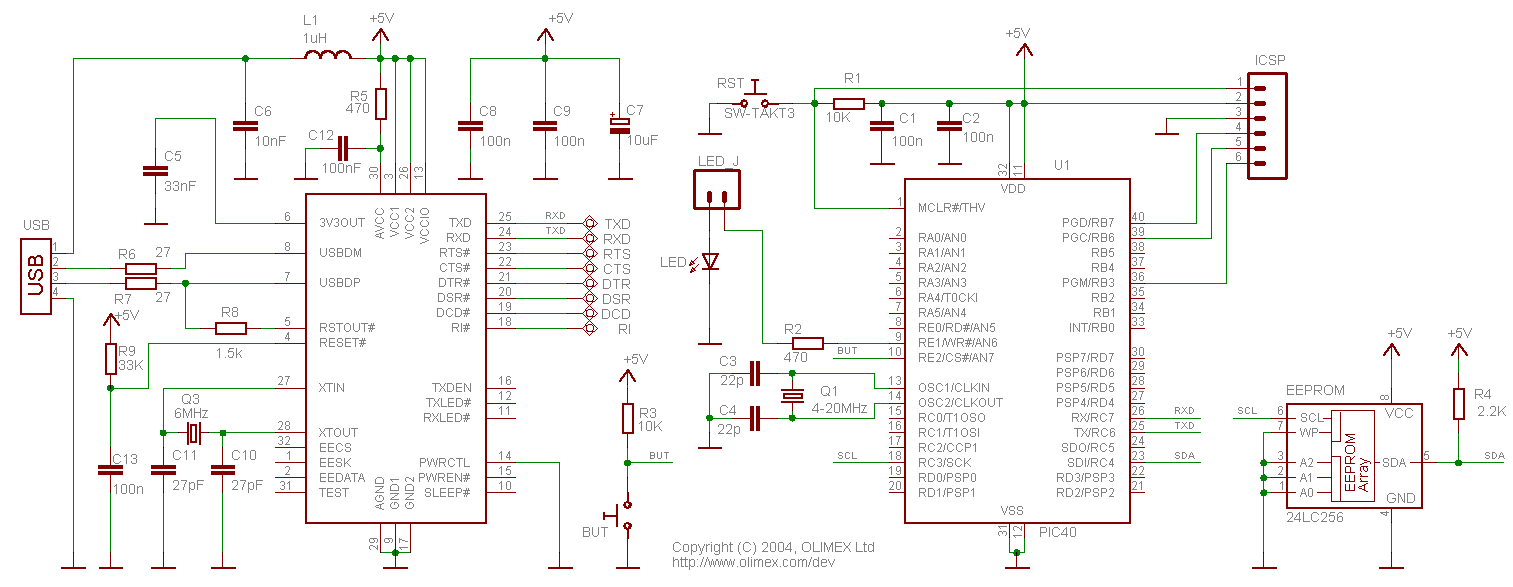
Power and serial communications are provided by the FTDI USB to RS232 converter chip. No additional setup is required; simply connect the USB cable from the computer to the board, and a new serial COM port will be installed automatically under Windows. The board also features a socket for an I2C EEPROM, complete with pull-up resistors and connections to PIC pins. This design is ideal for basic debugging and serial data logging applications.
The circuit utilizes the FTDI USB to RS232 converter chip, which facilitates seamless communication between a computer and microcontroller-based projects. The converter chip operates by converting USB signals from the computer into RS232 serial signals that can be understood by the microcontroller. This allows for easy data transfer and command execution without the need for complex setup procedures.
Upon connecting the USB cable, the operating system automatically recognizes the FTDI chip and installs the necessary drivers, creating a new COM port. This plug-and-play functionality streamlines the process for users, making it accessible even for those with limited experience in electronics.
In addition to the FTDI chip, the board includes a socket for an I2C EEPROM, which serves as non-volatile memory for storing configuration data or logging information. The inclusion of pull-up resistors is essential for maintaining the integrity of the I2C communication line, ensuring reliable data transmission between the EEPROM and the PIC microcontroller. The design also incorporates direct connections to the PIC pins, facilitating easy integration into various projects.
Overall, this circuit design is well-suited for applications that require basic debugging and serial data logging, providing a robust and efficient solution for developers and hobbyists alike.Power and serial communications are provided by the FTDI USB<->RS232 converter chip. You don`t have to do anything! Connect the USB cable from your computer to the board and a new serial com port will install under Windows. Also includes socket for I2C EEPROM - complete with pull-up resistors and connections to PIC pins. Perfect for basic debugging and serial data logging applications.', more= 🔗 External reference
The circuit utilizes the FTDI USB to RS232 converter chip, which facilitates seamless communication between a computer and microcontroller-based projects. The converter chip operates by converting USB signals from the computer into RS232 serial signals that can be understood by the microcontroller. This allows for easy data transfer and command execution without the need for complex setup procedures.
Upon connecting the USB cable, the operating system automatically recognizes the FTDI chip and installs the necessary drivers, creating a new COM port. This plug-and-play functionality streamlines the process for users, making it accessible even for those with limited experience in electronics.
In addition to the FTDI chip, the board includes a socket for an I2C EEPROM, which serves as non-volatile memory for storing configuration data or logging information. The inclusion of pull-up resistors is essential for maintaining the integrity of the I2C communication line, ensuring reliable data transmission between the EEPROM and the PIC microcontroller. The design also incorporates direct connections to the PIC pins, facilitating easy integration into various projects.
Overall, this circuit design is well-suited for applications that require basic debugging and serial data logging, providing a robust and efficient solution for developers and hobbyists alike.Power and serial communications are provided by the FTDI USB<->RS232 converter chip. You don`t have to do anything! Connect the USB cable from your computer to the board and a new serial com port will install under Windows. Also includes socket for I2C EEPROM - complete with pull-up resistors and connections to PIC pins. Perfect for basic debugging and serial data logging applications.', more= 🔗 External reference
